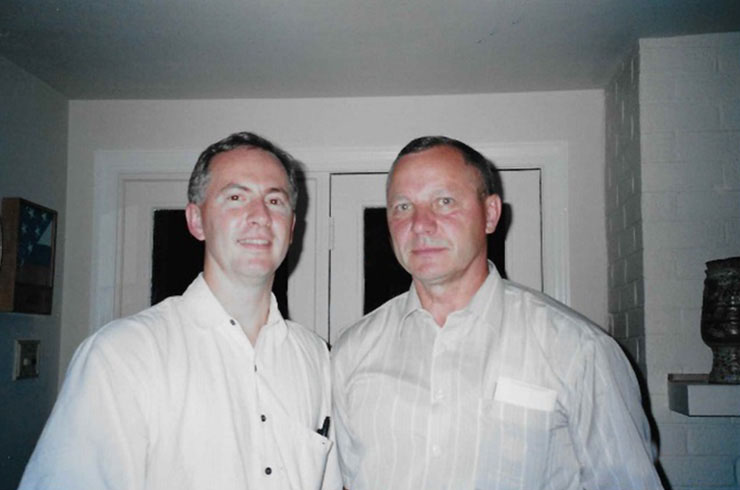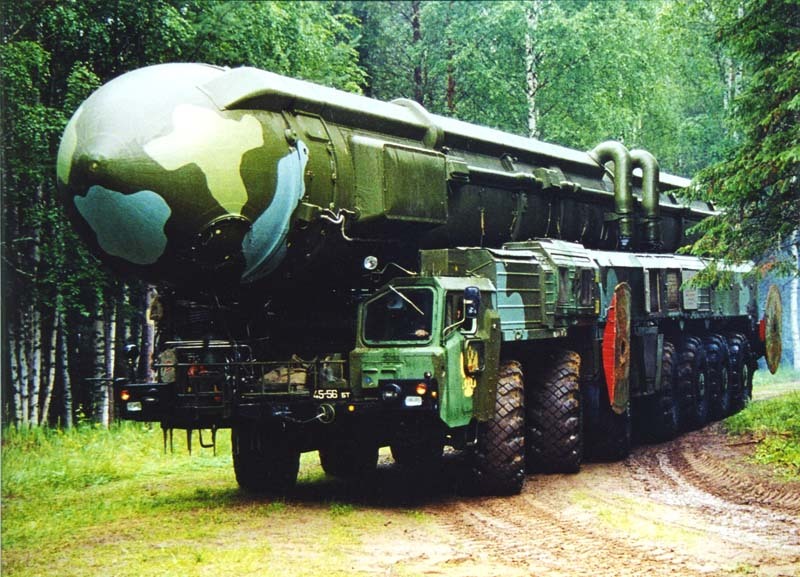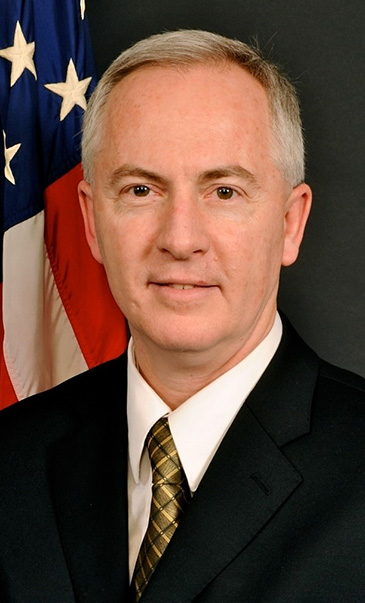


April 17, 2023
IMAGE: M6 highway west of Minsk. Photo by Olia Danilevich on Pexels.
Working relationships with a nuclear adversary involve years of trust building. They are constantly tested by events. And when the relationship is betrayed, it can raise catastrophic risks. Recreating such a relationship seems impossible without looking back to see how it survived previous crises.
After NATO intervened in Kosovo with air strikes in March 1999, Russia cut off all contact and relations with the United States. The chilling effect reached programs of mutual interest, like the Cooperative Threat Reduction (CTR) program to reduce threats from weapons of mass destruction in the former Soviet Union.
I had been part of the CTR program for years at that point. General Major Vladimir Frolov of the 12th Main Directorate (GUMO)[1]—which was responsible for security and management of Russia’s nuclear weapons—and I had established a regular phone call that we conducted every two weeks. The calls were pretty one sided. Our side would share as much information as we could on the status of our contracts and work being performed, while the 12th GUMO limited its responses to acknowledging dates and schedules for upcoming technical meetings.
Soon after NATO intervened in Kosovo, I informed Frolov that CTR work would continue unabated. Since these were regular calls focused on implementation of this work that the 12th GUMO wanted to continue, our lines of communication remained open. He told me that all senior level exchanges would be canceled for the next three months in response to NATO actions. Our technical team efforts would also be put on hold for one month, after which we could resume our visits to oversee the work and conduct technical talks on future requirements. I passed this information to our policy leadership in the Pentagon and at the National Security Council to let them know that the disruption of the program would not be permanent and that the Russians planned to resume the relationship after a short break.

CREDIT: Bill Moon.
The relationship we had established with our Russia counterparts that helped us weather this crisis did not happen overnight. In more than four years that preceded the crisis, I led over seven technical team trips, and CTR project teams made a half-dozen trips, to meet with our Russian colleagues. That was in addition to the teleconferences that took place every two weeks. Our commitment was also expressed through a budget that went from $3 million for the first project to over $50 million annually for the work supporting the Russian Ministry of Defense (MOD). And we were just getting started—we jointly developed plans for extensive work to secure the entire Russian warhead inventory
Looking back, it’s hard to imagine returning to that kind of relationship anytime soon, given the war that Russia is waging on Ukraine. Not long ago, the two largest nuclear superpowers were able to work together to secure nuclear warheads—their most valued political and military assets. It’s important to remember what made that work.
![]()
My adventure started with the establishment of the CTR program in 1992. I supported nuclear warhead security and the elimination of missiles, silos, and submarines. I worked with the Russians to reduce the nuclear stockpile and eliminate excess sites and facilities supporting nuclear weapons.
Under CTR, we had a close, professional relationship with the MOD and one of its most elite and secretive organizations in charge of its nuclear warheads, the GUMO. We worked closely together with Russia for 18 years. We even worked together in developing and fostering mutual relationships with Belarus, Ukraine, and Kazakhstan.
Many stories and academic studies examine high level negotiations on arms control. Those stories are exciting and illuminating; they provide important strategic insights. You don’t hear as many stories from a “mid-level bureaucrat”[2] like me, who managed programs and initiatives launched by the agreements. If you really want to understand how to promote nuclear risk reduction, you need to understand how people, teams, organizations, and states can work together.
William F. Burns—US special envoy on the safety, security, and dismantlement of nuclear weapons—led negotiations in fall 1992 that resulted in Belarus agreeing to give up its nuclear weapons and accede to the Non-Proliferation Treaty as a nonnuclear state. Belarus was the first of the former Soviet states to ratify the arms control treaties and accept US CTR assistance. Three Strategic Rocket Force bases at Postavy, Lida, and Mozyr were on Belarussian territory housing 81 nuclear-armed SS-25 mobile ICBMs.

CREDIT: Defense Threat Reduction Agency
With agreements in place, it was urgent that the work to eliminate the bases and remove the weapons be implemented as quickly as possible. As a project manager at the Defense Nuclear Agency (DNA),[3] I joined Paul Boren’s team to work this mission. I had been to the Soviet Union once, in 1990, and Russia in 1992, but Belarus was a new, unknown entity. We arranged our first trip to Belarus in September 1993 and another at the end of November. I supported four more trips through April 1995.
![]()
Even though agreements were in place to eliminate the bases and the nuclear missiles, we didn’t know how to get the work done.
We began planning our first trip to Belarus in summer 1993. We could find only one hotel in the country where we could stay. So the Hotel Planeta became our headquarters. We experienced the Soviet system firsthand when we checked in to find that the heat wasn’t turned on in the city until the end of October even though nighttime temperatures were below freezing when we arrived in September. We slept in our winter coats as the temperature fell to 50 degrees. Paying for the rooms and for food was difficult since credit cards were not accepted and there were few places to exchange money. We had to bring enough cash to support us for the trips.
Initial discussions presented interesting challenges. We met with senior officials in the Ministry of Defense and Ministry of Foreign Affairs of Belarus. When we began discussions on what they needed from us, we found that their interests weren’t focused on how to eliminate the missiles and facilities. Instead, they were concerned about the safe removal of the nuclear arsenal from their country. They wanted emergency response equipment to make sure there were no accidents when the systems were moved. They were concerned with the former bases and wanted our help in environmental cleanup and restoration. They wanted to retrain officers who were retiring from the bases to live in the community. And they wanted help to convert industries that were producing military equipment into ones that produced advanced commercial products. We learned very quickly that we would have to satisfy these needs if we wanted to complete the denuclearization and demilitarization work we had to accomplish.
We sought to define the requirements with enough specificity to write contracts and estimate costs that we could afford. We didn’t have a budget. Instead, we had to go through an improvisational process of specifying requirements, estimating costs, and submitting requests to the Pentagon to draw funds from unexpended funding sources across the entire defense budget. That meant determining the appropriate type of funds to request, such as military construction or operational funding, to match the contracts. Trying to provide funding for defense programs by reprogramming is very time consuming and, therefore, very unusual for such a program. In order to define the work, we needed to visit the sites and facilities involved so we could specify the work and estimate costs.
![]()
The first problem was getting there.
The only place we could stay was in Minsk, over three to four hours away from each of the bases that were located near the northern, eastern, and southern regions in the country. We hired local drivers with a passenger van to get us to the sites, but road maps were not published in Belarus. The locations and areas we were visiting were classified. The drivers knew the general direction and followed the main roads but sometimes had trouble following the directions provided by the Belarus officials.
On one of our trips to Lida, the gas line on the van froze and we had to pull over. Gasoline wasn’t available from many places, and it frequently would be watered down and cause gas lines to freeze. Our driver pulled over and got under the van to defrost the gas line by lighting a broken tree branch with his lighter as we ran down the road away from the van fearing it would cause an explosion. To our relief, the defrosting worked, and we went on our way. At this point, it was getting dark and we were late, and soon we were lost. The driver pulled over to ask for directions from a citizen by the road who proceeded to cuss us out and tell us we were about to cross the border and enter Poland. We quickly turned around and found another person to point us in the right direction.
We eventually arrived at the base and were greeted by our host, a Belarussian general. We were also greeted by another general in the same uniform. We were informed that Belarus had not yet designed its own uniforms, so when we sat down for discussions, we were actually across the table from a delegation that was half Russian and half Belarussian. From the time we arrived at the base, all discussions and site tours were conducted exclusively with the Russians. The Russian general ordered his troops to find gas for the van from their military supplies. After explaining to the Russians that the van couldn’t use jet fuel, they found gasoline to get us back to Minsk and the Hotel Planeta. We barely had time to focus on the work at hand, but we were able to convey our commitment to getting the work done.
![]()
Not all our visits were this harrowing. For the next couple of years, we made numerous trips to Belarus to put the contracts in place that enabled us to eliminate SS-25 launch-control facilities and help the Russians turn over the bases to Belarus. The key to our risk-reduction efforts was being able to work with the Russian military and the government officials from Belarus to meet each of their requirements. We did this by sharing communications with both parties as the work progressed through our embassies in Minsk and Moscow. Belarus and Russia clearly worked together closely to coordinate our cooperation.
The Russian general even went so far as to take us into an empty warhead storage bunker to demonstrate the withdrawal of Russian forces. After our first couple of trips that resulted in funding and contracting commitments with local companies, it seemed to us he was trying to reciprocate his commitment by revealing the inside of a bunker that held warheads just a year or two earlier and that was still under Russian custody.
The experience working with the Russian military in Belarus paid dividends when we began working directly with the MOD the next year. CTR was well known for its efforts in eliminating Russian strategic offensive arms, but the only program that directly worked with the MOD was the nuclear security program that provided comprehensive security for nuclear warheads during storage and transportation while in the custody of the 12th GUMO.
I didn’t know it when we first met Colonel-General Evgeny Maslin, the chief of the 12th GUMO, but I found out later from his deputy that the Russian general in Belarus had shared his impressions of our initial cooperation with the 12th GUMO. Apparently, he had to get permission from the 12th GUMO to take us into the empty warhead storage bunker. The 12th GUMO researched us carefully before we ever met. Maslin told us he had us checked out before we began our engagements.
Maslin and Dr. Harold Smith (assistant to the US secretary of defense for nuclear, chemical, and biological defense programs) held a series of cultural exchanges and meetings over the first year of the CTR agreement between the US Department of Defense and the MOD that involved further vetting of US commitment and objectives for working together. With that initial trust established, our nuclear security cooperation began in earnest and grew to involve technical discussions and meetings conducted by dozens of project teams engaging with 12th GUMO experts almost every week for years. These teams covered all aspects of nuclear warhead security, from physical security systems to transportation security to guard-force capabilities. We forged our cooperation through daily meetings, trips, technical talks, working through problems and solving them together, convincing our superiors how important it was, and urging them to give a little and getting that support.
Together with our Russian colleagues we achieved our goals of establishing modern comprehensive security systems at 12th GUMO warhead storage facilities and upgrading security capabilities to support warheads during transportation. We provided training and training systems and facilities, and we worked to establish a maintenance and sustainment program that we transitioned to the 12th GUMO. Our plan was to transition our cooperation from one where the United States provided assistance to one focused on a mutually beneficial technical exchange program that would enable both sides to benefit from each other’s experiences. We even considered establishing joint nuclear security research and development efforts.
Such was the scale and extent of collaboration between counterparts in the United States and Russia. It was essential for the success of the CTR program. It was critical for weathering political crises like the conflict in Kosovo.
![]()
It didn’t end all at once. CTR slowly degraded over time. Now it’s gone.
Russia rejected US proposals to extend the CTR program in 2013, and the agreement expired. I supported an effort to reengage on these issues through the US-Russian military-to-military exchange program, but the program was halted by the Joint Staff in response to the Russian incursion into Crimea in 2014.
The war in Ukraine has critically betrayed our efforts. Until Russia launched its invasion of Ukraine in February 2022, it seemed there was still hope of rekindling some form of cooperation. After all, we know from the 12th GUMO that Putin personally agreed to allow US access to the warhead storage facilities. Russian officers also visited two US storage sites. I would feel much safer if we still had the kind of communications with the 12th GUMO that we had in 1999.
But there’s nothing left to build from today. What took almost two decades to build up eroded in a span of eight years. In its place, we now see war in Ukraine and rising risks of nuclear escalation. Today, the prospects of returning to a US-Russian relationship based on cooperation and communication seems impossible.
If it is ever to be achieved again, and sustained, it is essential that we remember how hard it was and what it took to get there. You hear it all the time: dialogue, engagement, communication. These words are correct but inadequate when talking about international cooperation. To be sure, when we were working with Russia, we conducted regular meetings, we communicated, we engaged. What we were really doing was working together on a common challenge with a common goal. We shared the work and the responsibility. The diverse organizations and number of people involved were assets. It was the extent of the working relationships—among individuals, teams, and organizations—that made CTR a success.
Just as importantly, we must recognize the value of sustaining cooperative relations for as long as we can, with as many projects and engagements as possible, with any country willing to work with us. We need to find ways to establish such relationships even with countries we may disagree with, we may be competing with, and especially with countries that could pose a threat to US national security.
One of the most important lessons I learned from a career developing cooperative relations with countries from the former Soviet Union came from my former CTR boss, Major General Roland Lajoie (ret.). Returning from a particularly difficult policy review session, he remarked that many people were urging him to be tougher with the Russians and to say no to their requests. He told us there will always be a lot of people with many reasons to say no, but our job was to find a way to say yes to any cooperation we can. It’s tougher to find a way to say yes than it is to say no.
The war in Ukraine demonstrates that it’s more important than ever to pursue nuclear risk reduction whenever we can, wherever we can, and at whatever level we can. Cooperation should not be measured by budgets or equipment delivered but by the quality and quantity of the contacts and networks developed through cooperative efforts.
That requires developing engagements at all levels. They are all important.
The views expressed in this post are those of the author and not necessarily those of the Stanley Center for Peace and Security or any other agency, institution, or partner.
[1] Glavnoye Upravleniye Ministerstvo Oborony.
[2] That’s how historian Joseph “Pat” Harahan described me in his book on the CTR program, With Courage and Persistence.
[3] DNA became the Defense Special Weapons Agency (DSWA) in 1996, then the Defense Threat Reduction Agency (DTRA) in 1998.

William M. Moon is an expert on cooperative threat reduction, nuclear security, and arms control, with particular experience working on nuclear warhead security and arms control verification cooperation with Russia. He retired from the Defense Threat Reduction Agency in February 2019 after 30 years of federal service.
The Stories